Contents
- Rules for choosing tomato seeds for planting
- Sorting of tomato seeds
- Disinfection of tomato seeds
- Method for thermal disinfection of tomato seeds
- The harm and benefits of biostimulants
- Soaking and awakening of the embryo
- Whether or not to harden off tomato seeds
- What is bubbling and why is it needed
- Germination of tomato seeds for planting
Many novice vegetable growers assume that preparing tomato seeds for planting seedlings is only necessary to get quick shoots. In fact, this process allows you to solve a more serious problem. Many harmful microorganisms hibernate on the tomato seed. After planting untreated tomato seeds, the bacteria wake up and begin to infect the plant from the first days of its life. However, in this case, you can not overdo it, as some housewives do. Soaking seeds in several solutions for better disinfection can kill the germ.
Rules for choosing tomato seeds for planting
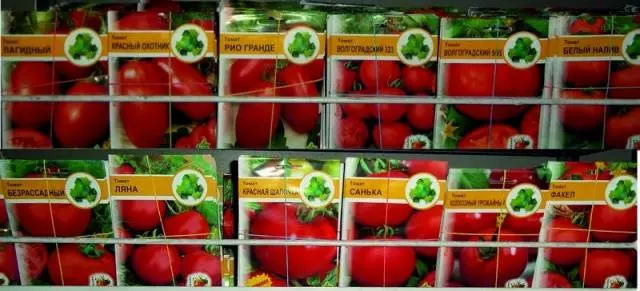
To grow a good tomato, you need to responsibly prepare the seed material. They start this not when the grains have already been bought, but even at the stage of their selection in the store.
First of all, before buying, you need to decide on the varieties. If you live in the northern region, it is better to give preference to early and medium early tomatoes. Late and medium tomatoes under these conditions can only be grown indoors. In the southern regions in the garden, any variety of tomatoes will have time to yield.
Culture is subdivided according to the height of the bush. It is optimal to buy seeds of determinant, as well as semi-determinant tomatoes for growing in open ground. Indeterminate tomatoes are preferable to choose for greenhouses.
It is important to pay attention to factors such as the purpose of the vegetable, the color of the pulp, the size and shape of the fruit. Tomatoes are varietal and hybrids. The latter are marked with the letter F1 on the packaging. It should be noted right away that it will not be possible to collect seeds for planting from hybrids at home.
Wanting to get good seedlings from purchased tomato seeds, it is important to pay attention to two factors:
- The percentage and speed of seed germination depends on the expiration date. If we compare the grains of sweet peppers and tomatoes, then the first is given a shelf life of no more than three years. Tomato seeds remain suitable for sowing for five years. The manufacturer always displays the expiration date on the packaging. It is important to note here that the longer the seeds are stored, the slower they will germinate. If you have a choice, it is better to buy fresher packaged tomato seeds.
- Seed storage conditions – a very important factor affecting the percentage of germination. For tomato grains, the optimal storage conditions are a dry place with an air temperature of about +18оC. Of course, it is impossible to find out how tomato seeds were stored before they hit the store counter. However, if the paper packaging shows that it has been exposed to dampness, is heavily wrinkled, or has any defects, then the storage conditions have been violated.
It is better not to buy tomato seeds in incomprehensible packages, without the specified packaging and expiration dates. It is not a fact that it is not clear what can grow from such grains instead of the expected tomato variety.
Sorting of tomato seeds
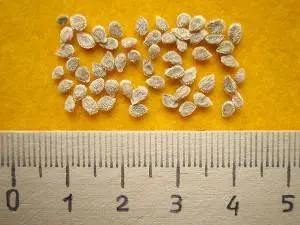
After buying tomato seeds, you should not immediately rush to soak them. There may be a large number of grains unfit for sowing in the package, and the time spent on them will not bring any results. The first rule of preparing tomato seeds for planting involves sorting them. The minimum that is required is at least a visual inspection of the grains. You can get healthy tomato seedlings only from large and thick beige seeds. All thin, darkened, as well as broken grains must be discarded.
Manual culling is appropriate for small quantities of seed. But what if you need to sort out a lot of tomato seeds, for example, intended for planting on the entire greenhouse? The simplest soaking method will come to the rescue. You will need a liter jar of warm water. For efficiency, you can split 1 tbsp. l. salt. It should be noted right away that starting from preparing seeds and ending with watering sprouted tomato seedlings, it is advisable not to use tap water. Contained impurities of chlorine are dangerous both for nascent sprouts and adult plants. It is best to stock up on rain or melt water. In extreme cases, you can buy purified water sold in PET bottles.
So, the saline solution is ready, we proceed to the culling of unusable tomato seeds. To do this, the grains are simply poured into a jar of water and watched for about 10 minutes. Usually all empty seeds float to the surface. You just need to catch them all, but do not rush to throw them away. Often, with improper storage, tomato grains simply dry out. Naturally, even a high-quality, very dried seed will float to the surface of the water, so all floating specimens will have to be visually inspected. All thick grains that come across are best left for germination. Well, those tomato seeds that have sunk to the bottom of the jar can be safely taken for planting.
There is another method for selecting low-quality grains, based on the school practice of a physics lesson. Dry tomato seeds are laid out in a thin layer on the table, after which they take any object that has the property of being electrified. An ebonite stick works best, but you can use a plastic comb or any other similar item. The essence of the method is to rub the object with a woolen cloth, after which they are driven over the spread out tomato seeds. An electrified object will immediately attract all empty seeds to itself, because they are much lighter than full specimens. This procedure must be done about 2-3 times for 100% certainty.
Disinfection of tomato seeds
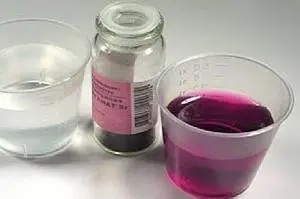
Disinfection is a prerequisite for preparing tomato seeds for sowing seedlings, since as a result of this process all pathogens on the grain shell are destroyed. In the people, the process of disinfecting seeds is called dressing. The most common method of disinfecting tomato seeds is to immerse them in a jar of 1% manganese solution. After 30 minutes, the seed coat will turn brown, after which the grains are thoroughly washed under running water.
The second method of disinfection is based on immersing tomato seeds in a jar of 3% hydrogen peroxide solution. The liquid must be heated to a temperature of +40оC. The grains in it are disinfected for 8 minutes, after which they are washed with clean water.
The video shows the treatment with potassium permanganate and hardening of tomato seeds:
Not bad, many gardeners speak of the biological preparation Fitolavin. It contains streptothricin antibiotics that prevent the development of black leg, wilting, and bacteriosis. The drug is not toxic, and, most importantly, it is safe for beneficial organisms in the soil. Processing of tomato seeds occurs according to the instructions that come with the preparation.
Most purchased tomato seeds do not need additional dressing, as the manufacturer has already taken care of this. Now there are even coated tomato seeds. They look like small balls, most often pasted on a special tape. When planting, it is enough to make a groove in the ground, spread out the tape with seeds, and then cover it with soil.
Method for thermal disinfection of tomato seeds
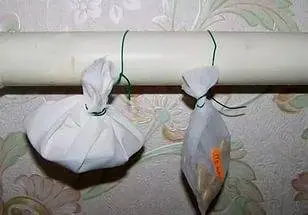
Few people use this method, but it still exists, and it should be given attention. Heat treatment of tomato seeds eliminates many harmful microbes, improves the sowing qualities of seed material, and increases yield. The method is based on heating dry tomato seeds at a temperature of +30оC within two days. Further, the temperature is increased to +50оC, warming the seeds for three days. The last stage involves heating the tomato seeds for four days at a temperature of +70оC.
The simplest method of heat treatment is considered to be heating tomato seeds for three hours on the lampshade of a table lamp at a temperature of +60оC. Some housewives have adapted to hang the seed material in bags near the radiator two months before the start of sowing.
The harm and benefits of biostimulants
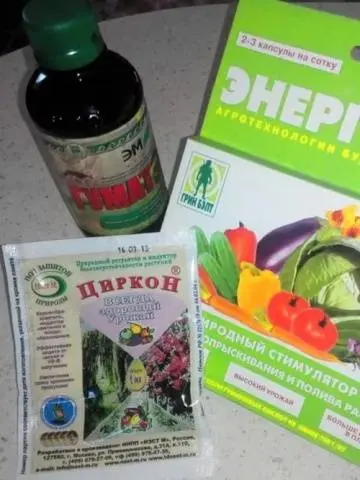
The use of biostimulants is aimed at the rapid awakening of embryos in grains. With their appearance on the market, all gardeners massively began to process any seed material before planting. There are many factory-made preparations, for example, Zircon, Gumat, Ecopin, etc. Enterprising people immediately found many primitive remedies. Instead of purchased biostimulants, they began to use aloe juice, potatoes, and even the medical preparation “Mumiyo”. However, over time, many vegetable growers faced the problem of poor yields of garden crops.
Now many vegetable growers refuse to use biostimulants. Occasionally, the use of drugs is resorted to if it is necessary to revive a very dry or long-stored seed material. Why is this needed? Everything is very simple. For example, for some reason, a favorite variety of tomatoes disappeared in the garden. It was not possible to collect the grains, they are not on sale either, and the dried seeds from the year before last were still in the stash. To revive your favorite tomato variety, you will have to resort to soaking in a biostimulator. After this procedure, without rinsing with water, the tomato seeds are dried and immediately sown in the ground.
Soaking and awakening of the embryo
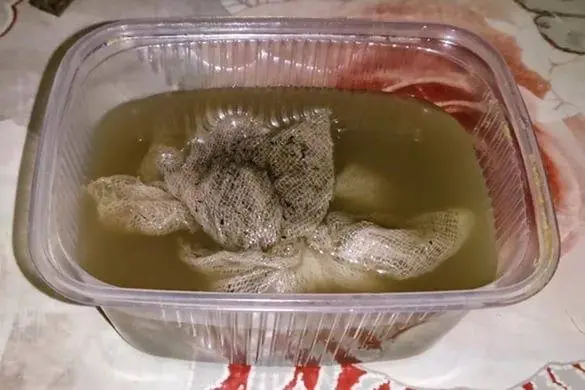
The process of awakening the embryo resembles heat treatment, only in hot water. It is best to use a regular thermos for these purposes. Pure water is poured into it with a temperature of +60оC, tomato seeds are poured, corked and kept for about 30 minutes.
After the awakening of the embryo, they begin to soak the seed material. To do this, use gauze bags, inside which tomato seeds are poured, dividing them into varieties. The bags are dipped in a jar of clean water at room temperature for 12 hours. Some people do it for a day. It is important to remove the bags from the water every 4–5 hours during soaking to replenish the grains with oxygen. The water must be changed, as the remnants of pathogens are washed off the seed coat.
Whether or not to harden off tomato seeds
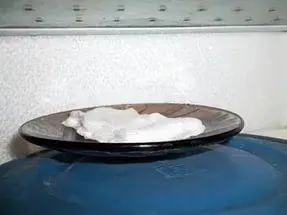
Tomato is a thermophilic culture. To adapt plants from an early age to aggressive weather conditions, the seeds are hardened. Opinions about the usefulness of this action are divided among different vegetable growers. Some talk about the need for hardening, others prefer to expose ready-made seedlings to this.
Tomato seeds that have undergone the soaking process are sent for hardening. They are laid out on any tray or plate, after which they are put in the refrigerator, where the temperature is approximately +2оC. After 12 hours, the tray is removed from the refrigerator and placed in the room also for 12 hours with an air temperature of +15 to +20оC. A similar procedure is performed 2-3 times.
What is bubbling and why is it needed
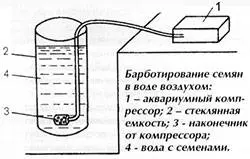
Bubbling is nothing more than the enrichment of tomato grains with oxygen. It can be carried out in conjunction with disinfection with Fitolavin. In the absence of an antibiotic, prepare a mixture of 1 tbsp. l. compost, plus ¼ tbsp. l. any jam. A drop of “Fitolavin” or a home-made mixture is diluted in a liter jar with warm water, where tomato seeds are subsequently placed. Next, you will need the participation of a conventional aquarium compressor. It will force air into a jar of water for 12 hours. After sparging, the seed material is dried to a flowable consistency. Water from the jar can be used to water other seedlings or houseplants.
Germination of tomato seeds for planting
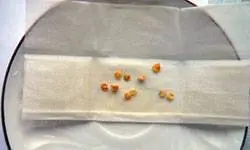
The germination process is the final step in preparing tomato seeds for planting. There is nothing difficult in this matter. It is enough just to place tomato seeds between two layers of gauze or any piece of natural fabric, lay on a tray and put in heat. The fabric must be periodically moistened, but not poured heavily with water, otherwise the embryos will get wet. As soon as the shell of the seed has burst, and a small bore has appeared from it, they begin to sow in the ground.
Sow germinated tomato seeds carefully so as not to damage the sprouts. If everything was done correctly, after 5–7 days, the first shoots will appear on the surface of the soil.









